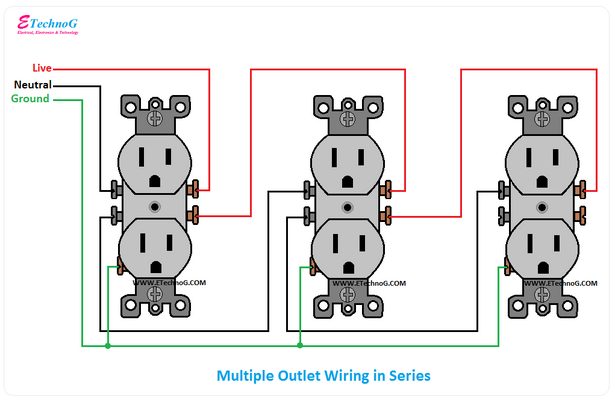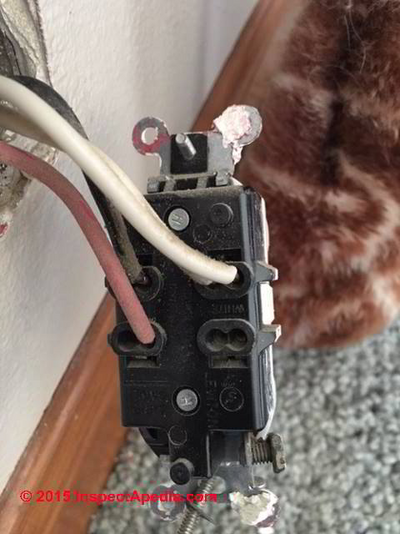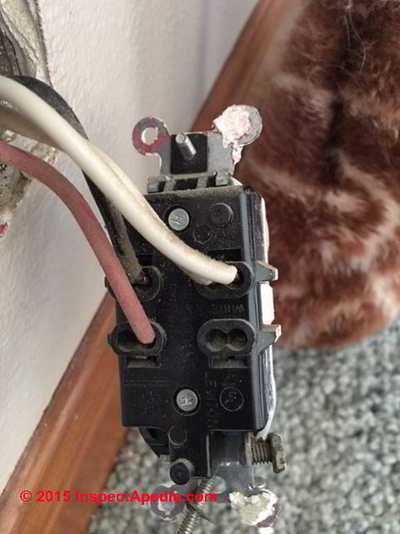You are using an out of date browser. It may not display this or other websites correctly.
You should upgrade or use an alternative browser.
You should upgrade or use an alternative browser.
No 110 at outlet
- Thread starter matzb
- Start date
The friendliest place on the web for anyone with an RV or an interest in RVing!
If you have answers, please help by responding to the unanswered posts.
If you have answers, please help by responding to the unanswered posts.
Larry N.
Well-known member
Perhaps check if there is a tripped GFCI?
Is one in the bathroom?My 2018 Thor Quantum has three 110 outlets. Two of them are working and the third does not. As of yesterday all three were working. No sign of a short at the outlet. Whats up?
LarsMac
Well-known member
I would start with investigating the fuse panel.
Kirk
Well-known member
I'm not quite sure what you are telling us? What would you expect to be shorted and how might that affect the outlet? My electric repair experience tells me that an open circuit would be far more likely to cause the problem that you have. In most RVs the outlets are all on one circuit and are all in parallel. The connection method is often called daisy-chaining them.No sign of a short at the outlet. Whats up?

When connected in this way, if one connection on the center outlet is loose or open, that would prevent power from reaching the last on to the right side. In RVs it is also common to use the "push in" type of outlet connections and those are quite common to get loose and make poor connections. If you will get your voltmeter it is very easy to trace it back to the problem.

Kirk
Well-known member
The fuses in an RV are for the 12V direct current circuits while the circuit breakers are for the 120V alternating current circuits. With only 1 bad outlet in a group of 3 it is highly unlikely that each outlet has a separate circuit breaker. All of them that I have seen would have all 3 outlets supplied by a single circuit breaker.I would start with investigating the fuse panel.
Gary RV_Wizard
Site Team
Intermittent power to a 120v outlet is often explained as Kirk described - a loose wire connection in a parallel circuit. However, I can think of one other possibility: load shedding. Many RVs have an "energy manager" that monitors the amp load and will remove power from selected circuits to prevent going over 30A. A utility outlet would not normally be managed that way, but that outlet may share a circuit with an appliance that is managed. If you have a remote display that looks like the one described here, that's a possibility.
RRR
Well-known member
With the cheap type of outlets that are used in RV's follow Kirk's advice. I'll bet you find a broken or disconnected wire in #2 or the problem one.
John From Detroit
Well-known member
I have found the outlets in RV's are often not the "Stab" type but the "Punch down" (uni box) you can tell them from "Stab" because both Stab and Screw (The good kind) have a screw in the center of the covert but the Uni-box types have two screws one in a top corner and the other on the other side bottom corner.. . My opinion of those Uni-box outlets is not something I care to type (Very bad is as close as I will get) They tend to melt under high load (more than 10 amps)
LarsMac
Well-known member
Well, I have three separate AC 120v outlet circuits, each on a separate breaker. And those breakers are on a central panel. Perhaps I misspoke using the term "fuse panel" when I should have said "Breaker panel." SorryThe fuses in an RV are for the 12V direct current circuits while the circuit breakers are for the 120V alternating current circuits. With only 1 bad outlet in a group of 3 it is highly unlikely that each outlet has a separate circuit breaker. All of them that I have seen would have all 3 outlets supplied by a single circuit breaker.
All of my circuitry connects in the same cabinet central to the RV -
AC panel, and DC panel.
Ray-IN
Well-known member
Please list what each receptacle is near. Do you have a microwave oven, it will be plugged into a 120VAC receptacle, which of the 3 is it plugged into. The microwave is the only 120V circuit I've seen that has only one receptacle in the circuit.Well, I have three separate AC 120v outlet circuits, each on a separate breaker. And those breakers are on a central panel. Perhaps I misspoke using the term "fuse panel" when I should have said "Breaker panel." Sorry
All of my circuitry connects in the same cabinet central to the RV -
AC panel, and DC panel.
Use a non-contact voltage tester to help trace live wires and locate the dead spot.
OldWEB
Well-known member
Kirk
Well-known member
That is certainly possible, however matzb said 3 outlets and I replied based on that information. I have found that most 50A RVs have 2 separate circuits for outlets but I don't recall having seen one with 3, except for the circuit for the microwave, which usually does have a separate circuit breaker and is actually an outlet.Well, I have three separate AC 120v outlet circuits, each on a separate breaker.
LarsMac
Well-known member
Sorry. I did not meant to create a distraction from the OP's question.
Gary RV_Wizard
Site Team
A separate ground wire to the outlet was not used if the box itself is grounded, either by a ground wire or the metallic shielding on the BX-type electrical cable. Common in buildings wired before about 1955.View attachment 172815
This is NOT a typical RV receptacle! It is also a "split" receptacle, one that uses two circuit breakers to protect it.
Anyone else notice it does NOT even have a ground wire connected?
Kirk
Well-known member
It would appear that we have been wasting our time trying to help as matzb has not been back since he made the post. Hopefully he will come back update us on where things stand.
OldWEB
Well-known member
Ah yes, you are so right, even looks like plaster walls. Until the OP shows up, I will still carry on off-topic with the receptacle is a newer style (post 1955) with the back push-in wiring. But later I was trying to figure why there are two neutrals... with one 'black' & 'red' hot and that is where I thought it was a split, just odd looking!A separate ground wire to the outlet was not used if the box itself is grounded, either by a ground wire or the metallic shielding on the BX-type electrical cable. Common in buildings wired before about 1955.

